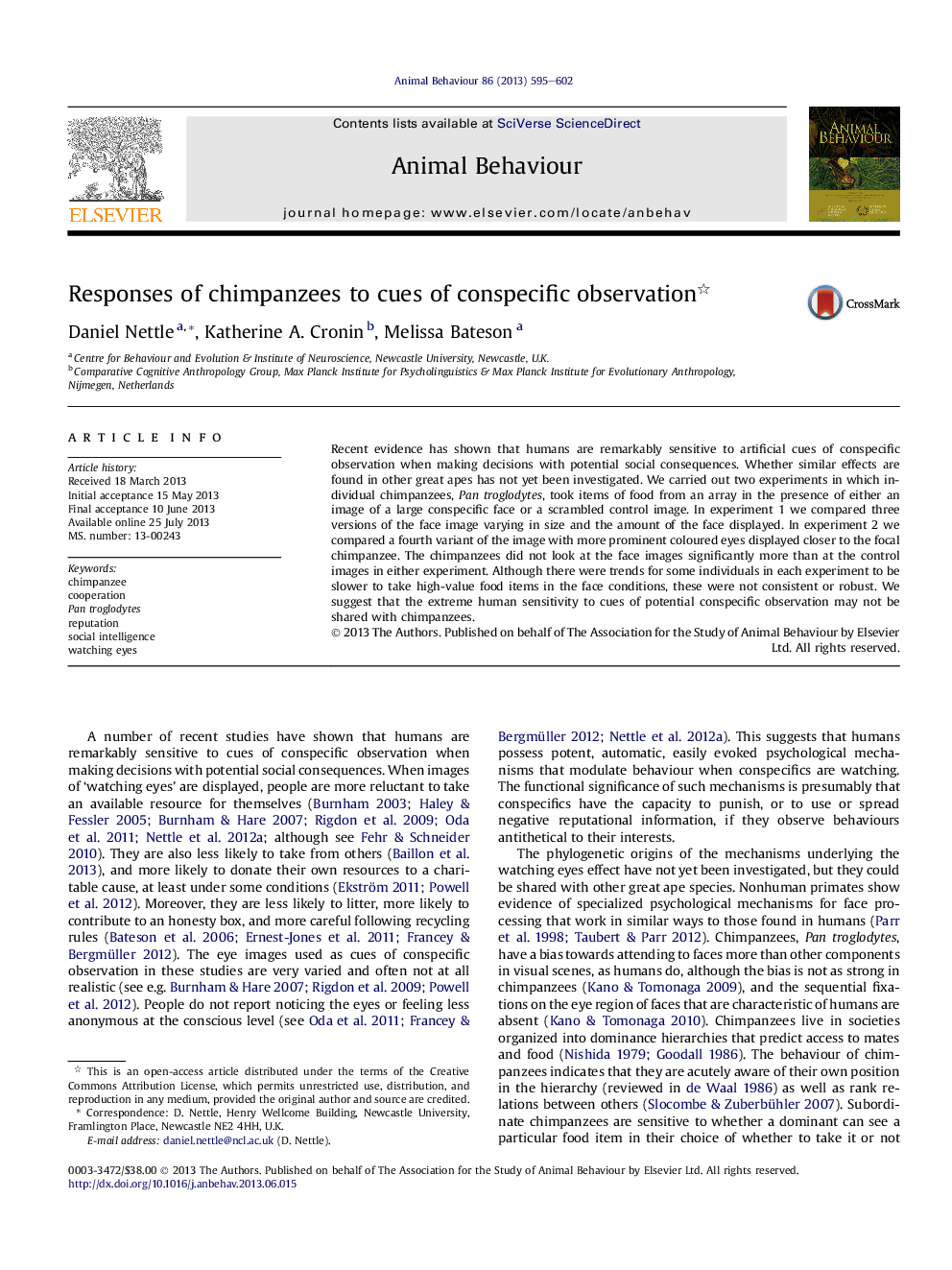| Article ID | Journal | Published Year | Pages | File Type |
|---|---|---|---|---|
| 10970615 | Animal Behaviour | 2013 | 8 Pages |
Abstract
Recent evidence has shown that humans are remarkably sensitive to artificial cues of conspecific observation when making decisions with potential social consequences. Whether similar effects are found in other great apes has not yet been investigated. We carried out two experiments in which individual chimpanzees, Pan troglodytes, took items of food from an array in the presence of either an image of a large conspecific face or a scrambled control image. In experiment 1 we compared three versions of the face image varying in size and the amount of the face displayed. In experiment 2 we compared a fourth variant of the image with more prominent coloured eyes displayed closer to the focal chimpanzee. The chimpanzees did not look at the face images significantly more than at the control images in either experiment. Although there were trends for some individuals in each experiment to be slower to take high-value food items in the face conditions, these were not consistent or robust. We suggest that the extreme human sensitivity to cues of potential conspecific observation may not be shared with chimpanzees.
Related Topics
Life Sciences
Agricultural and Biological Sciences
Animal Science and Zoology
Authors
Daniel Nettle, Katherine A. Cronin, Melissa Bateson,
